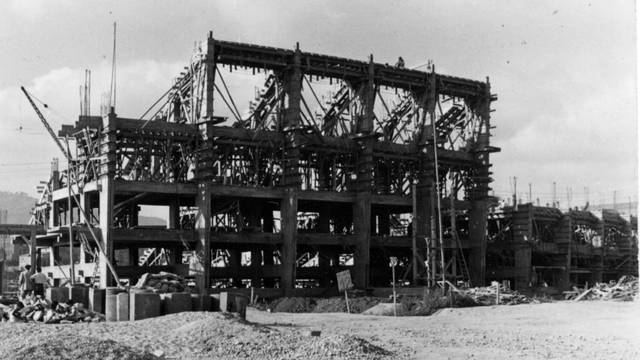Percaya atau tidak, golongan darah juga dapat memengaruhi
kepribadian seseorang. Meski Anda yang gemar berselancar di internet mungkin
sudah pernah membacanya, tetap tak ada ruginya bagi kita untuk berbagi info
soal golongan darah yang boleh dipercaya boleh pula tidak kepada khalayak yang
lebih luas.
Golongan darah A
Biasanya orang yang bergolongan darah A berkepala dingin, serius, sabar dan kalem atau cool, bahasa kerennya. Berkarakter tegas, bisa diandalkan dan dipercaya meski keras kepala. Sebelum melakukan sesuatu dipikirkan terlebih dulu dan direncanakan dengan matang.
Mereka mengerjakan segalanya dengan sungguh-sungguh dan konsisten, berusaha membuat diri sewajar mungkin. Mereka bisa kelihatan menyendiri dan jauh dari orang-orang. Mereka mencoba menekan perasaan mereka dan karena sering melakukannya jadi terlihat tegar kendati sebenarnya punya sisi yang lembek seperti gugup dan lain-lain sebagainya. Mereka cenderung keras terhadap orang-orang yang tak sependapat sehingga cenderung berada di sekitar orang-orang yang ber’temperamen’ sama.
Golongan darah B
Orang bergolongan darah B cenderung penasaran dan tertarik pada segalanya. Mereka juga cenderung punya terlalu banyak kegemaran dan hobi. Kalau sedang suka dengan sesuatu biasanya mereka menggebu-gebu tapi cepat juga bosan. Namun mereka bisa memilih mana yang lebih penting dari sekian banyak hal yang dikerjakannya. Mereka cenderung ingin jadi nomor satu dalam berbagai hal ketimbang hanya dianggap rata-rata. Tapi biasanya mereka cenderung melalaikan sesuatu jika terfokus dengan kesibukan yang lain. Dengan kata lain, mereka tak bisa mengerjakan sesuatu secara berbarengan.
Mereka dari luar terlihat cemerlang, riang, bersemangat dan antusias. Namun sebenarnya hal itu semua sama sekali berbeda dengan yang ada dalam diri mereka. Mereka bisa dikatakan sebagai orang yang tak ingin bergaul dengan banyak orang.
Golongan darah O
Orang yang bergolongan darah O biasanya berperan dalam menciptakan gairah untuk suatu grup selain menciptakan keharmonisan di antara para anggota grup tersebut. Figur mereka terlihat sebagai orang yang menerima dan melaksanakan sesuatu dengan tenang.
Mereka pandai menutupi sesuatu sehingga kelihatan selalu riang, damai dan tak punya masalah sama sekali. Tapi kalau tak tahan, mereka pasti akan mencari tempat atau orang untuk curhat (tempat mengadu).
Mereka biasanya pemurah (baik hati), senang berbuat kebajikan dan tak segan-segan mengeluarkan uang untuk orang lain. Mereka sebenarnya keras kepala juga, dan secara rahasia punya pendapatnya sendiri tentang berbagai hal. Di lain pihak, mereka sangat fleksibel dan mudah menerima hal-hal baru.
Mereka cenderung mudah dipengaruhi oleh orang lain, begitu juga yang mereka lihat dari TV. Terlihat berkepala dingin dan terpercaya tapi sering tergelincir dan membuat kesalahan besar karena kurang hati-hati. Tapi hal itu yang menyebabkan orang yang bergolongan darah O ini dicintai.
Golongan darah AB
Orang bergolongan darah AB ini punya perasaan sensitif dan lembut. Mereka penuh perhatian dengan perasaan orang lain dan selalu menghadapi orang lain dengan kepedulian serta hati-hati.
Di samping itu mereka keras dengan diri sendiri, dan dengan orang-orang yang dekat dengannya. Mereka jadi cenderung kelihatan mempunyai dua kepribadian, sering menjadi orang yang sentimen dan memikirkan sesuatu terlalu dalam.
Mereka punya banyak teman, tapi mereka butuh waktu untuk menyendiri untuk memikirkan persoalan-persoalan mereka.
Golongan darah A
Biasanya orang yang bergolongan darah A berkepala dingin, serius, sabar dan kalem atau cool, bahasa kerennya. Berkarakter tegas, bisa diandalkan dan dipercaya meski keras kepala. Sebelum melakukan sesuatu dipikirkan terlebih dulu dan direncanakan dengan matang.
Mereka mengerjakan segalanya dengan sungguh-sungguh dan konsisten, berusaha membuat diri sewajar mungkin. Mereka bisa kelihatan menyendiri dan jauh dari orang-orang. Mereka mencoba menekan perasaan mereka dan karena sering melakukannya jadi terlihat tegar kendati sebenarnya punya sisi yang lembek seperti gugup dan lain-lain sebagainya. Mereka cenderung keras terhadap orang-orang yang tak sependapat sehingga cenderung berada di sekitar orang-orang yang ber’temperamen’ sama.
Golongan darah B
Orang bergolongan darah B cenderung penasaran dan tertarik pada segalanya. Mereka juga cenderung punya terlalu banyak kegemaran dan hobi. Kalau sedang suka dengan sesuatu biasanya mereka menggebu-gebu tapi cepat juga bosan. Namun mereka bisa memilih mana yang lebih penting dari sekian banyak hal yang dikerjakannya. Mereka cenderung ingin jadi nomor satu dalam berbagai hal ketimbang hanya dianggap rata-rata. Tapi biasanya mereka cenderung melalaikan sesuatu jika terfokus dengan kesibukan yang lain. Dengan kata lain, mereka tak bisa mengerjakan sesuatu secara berbarengan.
Mereka dari luar terlihat cemerlang, riang, bersemangat dan antusias. Namun sebenarnya hal itu semua sama sekali berbeda dengan yang ada dalam diri mereka. Mereka bisa dikatakan sebagai orang yang tak ingin bergaul dengan banyak orang.
Golongan darah O
Orang yang bergolongan darah O biasanya berperan dalam menciptakan gairah untuk suatu grup selain menciptakan keharmonisan di antara para anggota grup tersebut. Figur mereka terlihat sebagai orang yang menerima dan melaksanakan sesuatu dengan tenang.
Mereka pandai menutupi sesuatu sehingga kelihatan selalu riang, damai dan tak punya masalah sama sekali. Tapi kalau tak tahan, mereka pasti akan mencari tempat atau orang untuk curhat (tempat mengadu).
Mereka biasanya pemurah (baik hati), senang berbuat kebajikan dan tak segan-segan mengeluarkan uang untuk orang lain. Mereka sebenarnya keras kepala juga, dan secara rahasia punya pendapatnya sendiri tentang berbagai hal. Di lain pihak, mereka sangat fleksibel dan mudah menerima hal-hal baru.
Mereka cenderung mudah dipengaruhi oleh orang lain, begitu juga yang mereka lihat dari TV. Terlihat berkepala dingin dan terpercaya tapi sering tergelincir dan membuat kesalahan besar karena kurang hati-hati. Tapi hal itu yang menyebabkan orang yang bergolongan darah O ini dicintai.
Golongan darah AB
Orang bergolongan darah AB ini punya perasaan sensitif dan lembut. Mereka penuh perhatian dengan perasaan orang lain dan selalu menghadapi orang lain dengan kepedulian serta hati-hati.
Di samping itu mereka keras dengan diri sendiri, dan dengan orang-orang yang dekat dengannya. Mereka jadi cenderung kelihatan mempunyai dua kepribadian, sering menjadi orang yang sentimen dan memikirkan sesuatu terlalu dalam.
Mereka punya banyak teman, tapi mereka butuh waktu untuk menyendiri untuk memikirkan persoalan-persoalan mereka.


.jpg)






